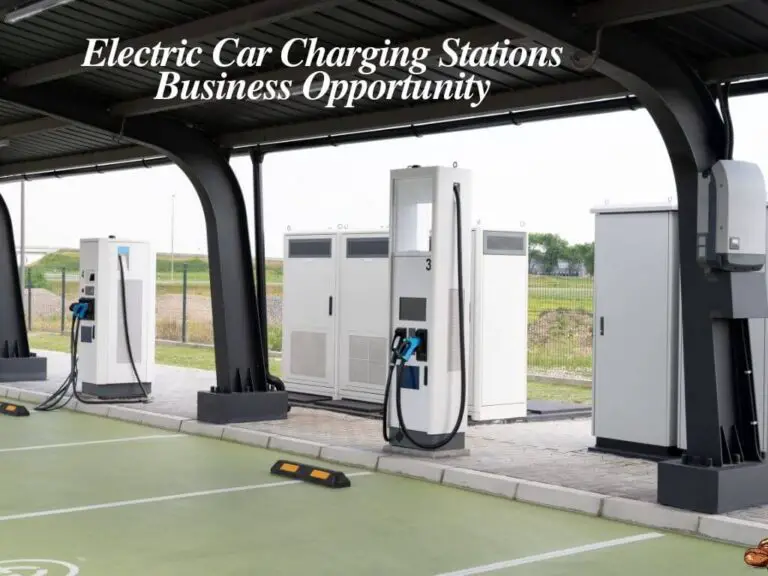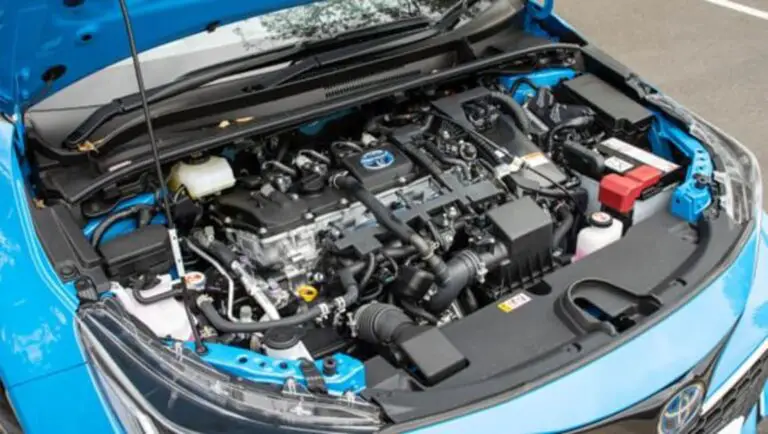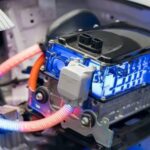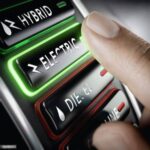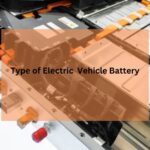Electric vehicles (EVs) have emerged as a revolutionary replacement for gas-powered cars as we progress towards a more sustainable future. But what distinguishes them from conventional cars? Their batteries hold the key. The different types of electric vehicle batteries that will power the transportation of the future will be examined in this blog post.
The power source of these green cars, electric vehicle batteries are also a key element in determining their price, performance, and range. Batteries come in a wide range of types, including solid-state, sodium-ion, lithium-ion, nickel-metal hydride, and zinc-air. Each type of battery has distinct advantages and disadvantages that make it appropriate for particular uses.
We’ll go through the significance of EV batteries, their role in environmentally friendly transportation, and their impact on the future in this piece. In order to better understand the many types of electric car batteries that are influencing the automotive industry, let’s get started.
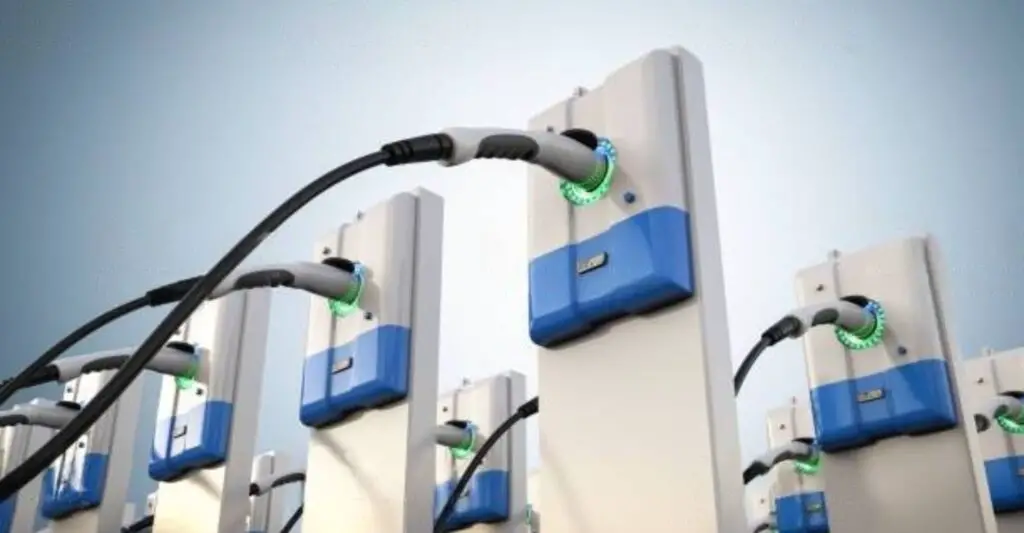
Different Types of Electric Vehicle Batteries: Battery Breakdown
Batteries of many categories, including lithium-ion, nickel-metal hydride, and lead-acid, are crucial to the success of electric cars. Due to its high energy density, lengthy lifespans, and need for little maintenance, lithium-ion batteries are the most typical and commonly used. Promising innovations with increased energy density, longevity, and safety include zinc-air, sodium-ion, and solid-state batteries.
They are still in the development stage and not widely accessible, though. For picking the best battery for a particular task and estimating the performance and range of an EV, it is essential to understand the distinctions between various two types. The creation of effective and sustainable EV batteries will play a significant role in the future of sustainable transportation.
Lithium-Ion Batteries: A Charge Above the Rest
Lithium-ion batteries are the most often used batteries in electric vehicles, due to their high energy density and long lifespan. They are a popular option for both producers and consumers despite some disadvantages.
The Science Behind the Buzzword: Explaining Lithium-Ion Batteries
Because of its high energy density and extended lifespan, lithium-ion batteries have become synonymous with electric cars. To create power, these batteries rely on the passage of lithium ions between the positive and negative electrodes.
The positive electrode is formed of lithium metal oxide, whereas the negative electrode is graphite. The electrolyte is a lithium salt in an organic solvent that permits ions to flow between the electrodes.
Fast and Furious: Advantages and Disadvantages of Lithium-Ion Batteries
Lithium-ion batteries have a wide range of advantages. They have a higher energy density than other battery types, which results in greater driving distances and a longer lifespan. They can maintain their charge for extended periods of time because to their low self-discharge rate. Although they can be sensitive to high temperatures and have a chance of thermal runaway, they are relatively expensive to produce.
High Voltage on the Road: Examples of EVs that Use Lithium-Ion Batteries
The Tesla Model S, Nissan Leaf, and Chevy Bolt are three of the most well-known electric vehicles on the market today that are propelled by lithium-ion batteries. With their great driving ranges and quick recharge periods, these cars are useful for daily use. Electric car range and recharge times are anticipated to increase as lithium-ion technology advances.
In general, lithium-ion batteries are the type of battery that are now utilized the most in electric cars. Although they have some shortcomings, their advantages make them a common option for both manufacturers and consumers. Future sustainable transportation will depend on the creation of increasingly effective and affordable lithium-ion batteries as the demand for electric vehicles rises.
Nickel-Metal Hydride Batteries: The Old Faithful
It’s simple to forget about the reliable old nickel-metal hydride (NiMH) batteries that propelled many early hybrid vehicles as lithium-ion batteries continue to dominate the electric vehicle (EV) industry. NiMH batteries still have a role in the world of EVs, despite the fact that manufacturers have just stopped using them.
The Grandpa of EV Batteries: Explaining Nickel-Metal Hydride Batteries
The positive electrode, which is often formed of nickel oxyhydroxide, and the negative electrode, which is typically made of a hydrogen-absorbing alloy, work together chemically to store energy in NiMH batteries.
Usually, potassium hydroxide serves as the electrolyte. These batteries are more dependable and less costly than lithium-ion batteries, which have a lower energy density.
Steady as She Goes: Advantages and Disadvantages of Nickel-Metal Hydride Batteries
NiMH batteries’ dependability is one of its benefits. They have a track record of success and have been employed in hybrid cars for many years. They can also be packed more compactly inside a car since they don’t need as much cooling as lithium-ion batteries do.
They are heavier and take up more space than lithium-ion batteries, although they have a lower energy density. Compared to lithium-ion batteries, they also last less time and are less ecologically friendly.
Classic Car Revival: Examples of EVs that Use Nickel-Metal Hydride Batteries
NiMH batteries still have a role in the world of EVs despite their shortcomings. For instance, the NiMH battery pack is still used in the Toyota Prius, one of the most well-known hybrid cars. The Ford Escape Hybrid and the Honda Civic Hybrid are two other electric vehicles (EVs) that make use of NiMH batteries.
NiMH batteries still have a place in the realm of environmentally friendly transportation, even if they may not be as showy or high-tech as their lithium-ion counterparts.
Lead-Acid Batteries: The Reliable Workhorse
Since lead-acid batteries were initially utilized in electric vehicles in the 1800s, a lot has been learned about the development of electric car batteries. Despite the fact that lead-acid batteries are less frequently used in electric cars nowadays, they are nevertheless present in some low-speed, short-range models, such golf carts and neighborhood electric vehicles.
The Jack-of-All-Trades: Explaining Lead-Acid Batteries
Lead plates and an electrolyte of sulfuric acid make up lead-acid batteries. Lead sulfate and hydrogen gas are produced when the battery is charged by the reaction between the sulfuric acid and the lead plates.
Lead sulfate combines with the electrolyte during battery discharge to create lead oxide and sulfuric acid. The battery may be recharged and used once again because this process is reversible.
Cheap and Cheerful: Advantages and Disadvantages of Lead-Acid Batteries
The affordability of lead-acid batteries is one of its main benefits. Additionally, they are widely accessible and simple to recycle.
In contrast to other battery types, they are not extremely energy-dense and have a limited lifespan. To guarantee peak performance, they also need routine maintenance.
Putting in the Miles: Examples of EVs that Use Lead-Acid Batteries
The Zenn Electric City Car, the GEM e2, and the Miles Electric Vehicles ZX40ST are three examples of EVs that employ lead-acid batteries.
These cars are ideal for short excursions around town and are greener alternatives to gas-powered cars, despite their small range and inability to drive vast distances.
Overall, lead-acid batteries are a reliable, affordable, and still have a place in some applications, even though they are not the most sophisticated or energy-efficient option for electric vehicles. In the future, lead-acid batteries might become even more advanced as technology advances.
Solid-State Batteries: The Next-Gen Game Changer
In search of a battery that will upgrade your electric car? Solid-state batteries are the only option. The EV industry is about to undergo a revolution because to these cutting-edge batteries’ longer lifespans, increased safety, and higher energy density.
The Future is Here: Explaining Solid-State Batteries
The most recent advancement in EV battery technology is the solid-state battery, which outperforms lithium-ion batteries in terms of energy density, safety, and lifespan.
These batteries have superior conductivity and less risk of fires and explosions because they use a solid electrolyte rather than the liquid electrolyte present in conventional batteries.
The High-Octane Option: Advantages and Disadvantages of Solid-State Batteries
The high energy density of solid-state batteries, which allows them to store more energy in a more compact and lightweight container and extend the range of electric cars, is one of its key advantages. Additionally, they last longer, which lessens the requirement for frequent replacements.
But solid-state batteries are still hard to come by and expensive to make. Additionally, there are still some technical obstacles to be solved, like achieving performance consistency across temperature ranges.
Leading the Race: Examples of EVs that Use Solid-State Batteries
Several automakers have been developing solid-state batteries for their electric vehicles, including Toyota and Volkswagen. Toyota currently employs solid-state batteries in its hydrogen fuel cell car, the Mirai, and the firm intends to do the same for its electric vehicles by 2025.
Volkswagen is also making significant investments in solid-state battery technology and intends to introduce electric vehicles equipped with them in the upcoming years. Other businesses, like Fisker and QuantumScape, are also working on solid-state batteries and plan to soon integrate them into their electric vehicles.
Solid-state batteries have the potential to transform the EV industry and pave the way for a more sustainable and effective transportation future as the technology advances and becomes more widely available.
Other Types of EV Batteries: The Underdogs
The necessity to cut carbon emissions and the advantages of electric vehicles for the environment are driving up their popularity. Electric car batteries are among its most important parts.
Lithium-ion batteries are the most prevalent type of battery among many others. The lead-acid, solid-state, sodium-ion, zinc-air, and flow batteries are among the various battery kinds that are gaining popularity.
We will talk about a few of the additional battery kinds and their features in this blog article for electric vehicles.
Salty Solution: Sodium-Ion Batteries
Due of their inexpensive price and excellent energy density, sodium-ion batteries are attracting more attention. These batteries are a great substitute for lithium-ion batteries since they use sodium ions instead of lithium ions. Sodium-ion batteries are a viable alternative for the future of electric vehicles since they have the potential to be less expensive and more widely available than lithium-ion batteries.
Breath of Fresh Air: Zinc-Air Batteries
Another option to lithium-ion batteries is zinc-air batteries. In these batteries, zinc reacts with airborne oxygen to create electricity. Due to its high energy density, zinc-air batteries are appropriate for use in electric cars. They are also affordable, environmentally sustainable, and safe.
Liquid Energy: Flow Batteries
A special kind of battery called a flow battery uses two tanks of liquid electrolytes. To create electricity, electrolytes pass through a stack of cells. Flow batteries have a long lifespan and are very scalable.
Additionally, they are recyclable and safe for the environment. Although they are still in the development stage, flow batteries are not yet frequently used in electric vehicles.
Finally, there are various types of electric vehicle batteries, each with particular advantages and characteristics. Even though lithium-ion batteries are the most popular, other types of batteries, including sodium-ion, zinc-air, and flow batteries, are gaining popularity because of their potential for high energy density, low cost, and environmental friendliness. The creation of more effective and environmentally friendly batteries is essential for the future of sustainable transportation as the demand for electric vehicles rises.
Comparison of Different EV Batteries: Which One Wins the Race?
The competition between various EV battery types increases as electric vehicles gain popularity. We must take into account a number of things when selecting the right battery. The numerous EV battery types will be compared in this section based on their energy density and range, charge time, price and availability, environmental effect, and safety.
A Matter of Distance: Energy Density and Range
The amount of energy that may be stored in a battery per unit of weight or volume is referred to as energy density. An EV has a range that increases with energy density. When comparing different EV battery types, lithium-ion batteries have the highest energy density. Compared to other batteries, they have a larger energy capacity and a wider operating range.
Quick Pit Stops: Charge Time
Owners of electric vehicles must consider the charge time carefully. It establishes how long they must wait before making another use of their car. Since lithium-ion batteries charge more quickly than other types of batteries, they are a preferred option for electric vehicles.
However, next-generation batteries such as solid-state batteries have the potential to drastically cut down charge times, making them a desirable choice in the future.
Paying the Price: Cost and Availability
Depending on the kind, batteries can range widely in price and availability. Although they are the least expensive option, lead-acid batteries have a short lifespan and range. The most extensively used and have a reasonably long lifespan are lithium-ion batteries, which are also more expensive than other choices.
Because they are still in the development stage, next-generation batteries like solid-state batteries are more expensive and less widely accessible.
Green Machine: Environmental Impact
The environmental benefits of electric automobiles over conventional gasoline-powered vehicles are frequently cited. However, it’s important to take into account how EV batteries will affect the environment.
Although the production and mining of the materials used in lithium-ion batteries can have an adverse impact on the environment, the batteries themselves have a relatively low environmental impact.
Because they use fewer hazardous materials and are easier to recycle than lithium-ion batteries, solid-state batteries have the potential to be more environmentally friendly.
Stay Safe on the Road: Safety
Any type of vehicle must prioritize safety, and EV batteries are no different. The potential of thermal runaway, which can result in fires or explosions, is increased with lithium-ion batteries. Because they use non-flammable materials, solid-state batteries and other next-generation batteries are safer than lithium-ion batteries.
Comparing Electric Vehicle Batteries: Which One is the Best for You?
| Battery Type | Energy Density (Wh/kg) | Charge Time | Cost | Environmental Impact | Safety |
| Lithium-ion | High | Short | High | Moderate | Risk of thermal runaway |
| Nickel-metal hydride | Medium-high | Medium | Medium | Moderate | Safer than lithium-ion |
| Lead-acid | Low | Long | Low | Moderate | Safe but short lifespan |
| Solid-state | High | Short | High | Environmentally friendly | Safe |
| Sodium-ion | High | Short | TBD | TBD | TBD |
| Zinc-air | High | Short | TBD | TBD | TBD |
| Flow | Low | Long | TBD | TBD | TBD |
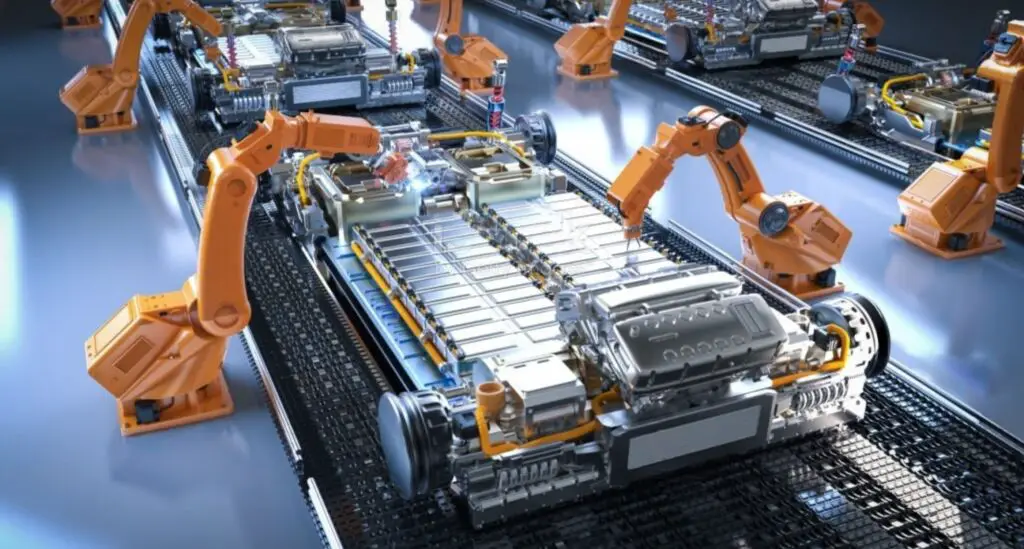
Advances in EV Battery Technology: Fueling the Future
The need for stronger and more effective EV batteries is growing along with the popularity of electric cars (EVs). The capacities of EV batteries have significantly increased thanks to technological developments, making them more available and appealing to customers.
We will talk about some of the most recent advancements in EV battery technology that are powering the transportation of the future in this part.
Powering Up: Increased Energy Density
Energy density, which affects how much energy can be stored in a given battery size and weight, is a crucial component of EV battery performance. Researchers have been able to boost the energy density of EV batteries because to developments in battery chemistry and design.
As a result, EVs are a more feasible alternative for long-distance excursions because they can go further on a single charge.
Lightning Speed: Faster Charging
The length of time it takes to charge an EV is one of the main issues for owners. But this worry is going away thanks to the advancement of faster charging technology.
Some EVs may now be recharged in as short as 15-20 minutes thanks to high-speed chargers and better battery chemistry. In other words, EVs may be swiftly charged at lunch or while conducting errands.
Road Trip Ready: Longer Battery Life
The lifespan of the battery before it needs to be changed is another crucial aspect of EV battery technology. The lifespan of EV batteries has been increased thanks to improvements in battery chemistry and manufacturing methods.
As a result, EV owners may anticipate longer battery life between replacements, making EV ownership a more practical and affordable choice.
Sustainable Future: Recycling and Reuse
Concern over what will happen to these batteries as they reach the end of their useful lives is growing as there are more electric vehicles (EVs) on the road. On the other hand, scientists are researching strategies for EV battery recycling and reuse.
This implies that the useful components of EV batteries may be removed and utilized to produce new batteries or other goods, minimizing environmental impact and fostering the development of a more sustainable future.
To summarize, advances in EV battery technology are making electric vehicles more feasible and sustainable for users. In order to lessen their carbon impact and save money on transportation, EVs are becoming a more appealing alternative because to improvements in energy density, quicker charging, longer battery life, and opportunities for recycling and reuse.
Future of EV Batteries: Beyond the Horizon
Batteries for electric vehicles have advanced significantly in recent years, and they have a promising future ahead of them. The following amazing developments are on the horizon:
- The Big Picture: Electric vehicle batteries are a crucial component in the switch to renewable energy. The importance of EV batteries will grow as we go toward a more sustainable future.
- Smart Power: EV batteries will be able to be charged during off-peak hours when electricity is less expensive and utilized to power houses during peak hours thanks to integration with smart grids and energy storage.
- Brain Boost: Battery management system innovations will enable more efficient and effective use of EV batteries, extending their life and performance.
- Two-Way Street: EV batteries could feed energy back into the grid during periods of high demand thanks to vehicle-to-grid (V2G) technology. This might transform EVs into energy sources in addition to modes of transportation.
The future of EV batteries is bright given these exciting developments that are about to be realized. We may anticipate even additional advancements as technology advances, which will increase the effectiveness, sustainability, and accessibility of electric cars.
Final Verdict
It is abundantly evident that the future of transportation and energy is moving in the direction of a cleaner, more sustainable route as we have investigated the “different types of electric vehicle batteries“. Increased energy density, quicker charging, longer battery life, and the potential for vehicle-to-grid technology are all results of advances in battery technology.
Range anxiety and high expenses are only two of the obstacles that must to be solved. As customers, researchers, and innovators, it is up to us to keep pushing the envelope and looking at new options for various types of electric car batteries.
Let’s push forward and bring about change for a better, more productive future.
FAQ’s
What battery technology will replace lithium?
There isn’t yet a single battery technology that can stand in for lithium-ion batteries. Widely used lithium-ion batteries have shown to be effective and dependable for a variety of applications. Alternative battery technologies, including as solid-state batteries, lithium-sulfur batteries, and other cutting-edge materials, are being investigated via continuing research and development.
These innovations have the potential to produce energy with greater density, live longer, and be safer. Lithium-ion batteries may eventually be replaced by another technology, but the market is actively looking for innovations to fulfill the need for energy storage in the future.
What are the 3 types of batteries?
Primary batteries, secondary batteries, and fuel cells are the three different types of batteries. Primary batteries have a single usage and cannot be recharged. Rechargeable secondary batteries can be used again. An ongoing supply of fuel and oxygen is needed for the electrochemical process that fuel cells use to produce energy.
Who is the leader in EV battery technology?
It is challenging to identify a single leader in electric vehicle (EV) battery technology as of my knowledge cutoff in September 2021 due to the industry’s fast evolution. Nevertheless, a few of businesses have been at the forefront of EV battery technology research and have had a big impact on the industry.
Tesla, Panasonic, LG Chem, CATL (Contemporary Amperex Technology Co. Limited), and Samsung SDI are a few of the well-known innovators in the field of EV battery technology. These businesses have made important strides in battery technology, enhancing energy density, charging efficiency, and overall performance. It’s vital to remember that as new advancements and ideas continue to appear in the EV battery industry, the competitive environment is prone to change.

